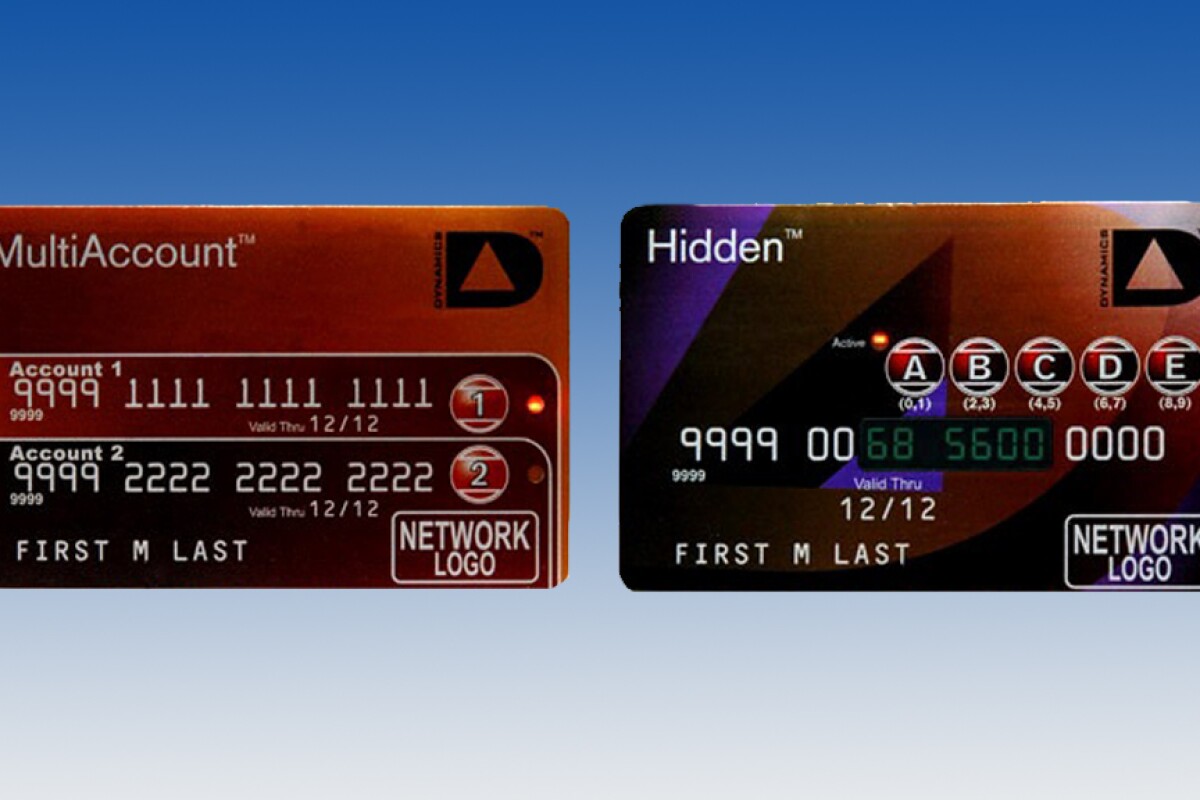If you’re anything like me, there’s a stack of credit cards bulking up the size of your wallet (or purse), making it fit to burst in a Costanza-like explosion of receipts and unused condoms. New technology from Pittsburgh, Pennsylvania startup Dynamics Inc. could help cut the number of cards cluttering up your wallet by allowing you to access multiple credit card accounts on a single card. To enhance security, the technology also allows the credit card number that appears on the front of a card to be hidden until the correct code is entered.
The technology, which Dynamics Inc. has dubbed Card 2.0, includes the world’s first fully card-programmable ‘Electronic Stripe’ in place of the traditional magnetic stripe. While the Electronic Stripe can be read at any existing point-of-sale (POS) magnetic stripe reader, it also allows any bit of information stored on the programmable stripe to be changed at any time using the card itself. The device is as thin, flexible and durable as current credit cards and will last over three years on a single battery charge.
Dynamics Inc. says the Card 2.0 platform could be used in countless applications, which it refers to as Payments 2.0 applications. At the DEMO Fall 2010 emerging technology conference in Silicon Valley, California, this week, it showcased two potential Payments 2.0 applications.
MultiAccount
The first was a card that includes two buttons on the face to select the desired account. When one of the buttons alongside the two printed account numbers is pressed, a small light next to chosen account number lights up and the magnetic-stripe information associated with the selected card is written to the Electronic Stripe, ready to be swiped at any magnetic card reader.
Hidden
The second card on show was a device that includes five buttons on the face of the card and a paper-thin flexible display that hides a portion of the card number. Since there is no personal information stored on the Electronic Stripe and the card number is incomplete, the card is essentially useless if it is lost or stolen. To turn the card on, a user must enter a PIN number that unlocks the card, with the flexible display then revealing the full card number. Again, the relevant magnetic-stripe information is then written to the Electronic Stripe so it can be used with a magnetic stripe reader. After a period of time, the display turns itself off and the Electronic Stripe erases itself, removing all critical payment information from the surface of the card.While the convenience of being able to access multiple accounts from a single card is likely to appeal to many people, it’s the security features of the Hidden card that seem to have the greatest potential. Credit card fraud costs banks and users billions of dollars worldwide every year and a system that could significantly reduce such losses should appeal to the ones most likely to bring the technology to consumers – namely the banks and credit card companies.
But we’re not going to hold our breath. This isn’t the first impressive security technology aimed at credit cards we've seen. Back in 2006 we saw the creation of the first credit card with an embedded flexible display panel that would allow users to generate and display a dynamic passcode for one-time use. In 2007 we looked at a card from Emue Technologies that incorporated a 12-button keyboard, a microprocessor and an embedded alphanumeric display. Emue followed that up last year with the next generation of that technology, which was being tested by Visa Europe. However, we’re still waiting for any of these technologies to become available to the public.




